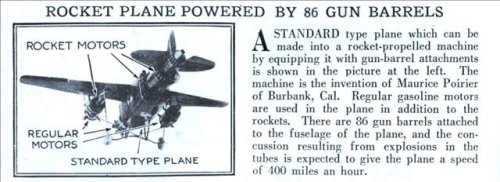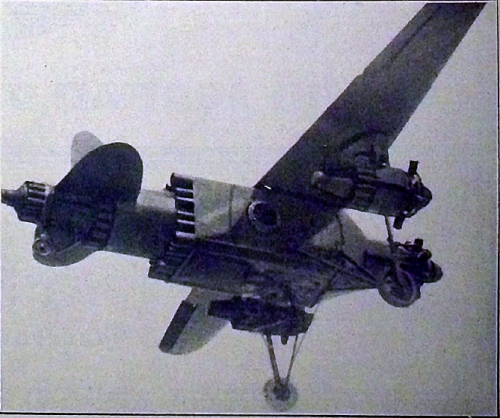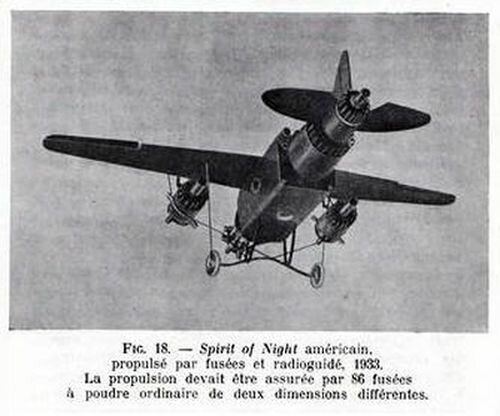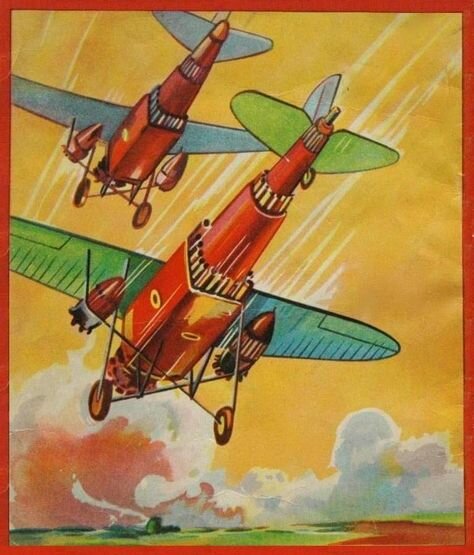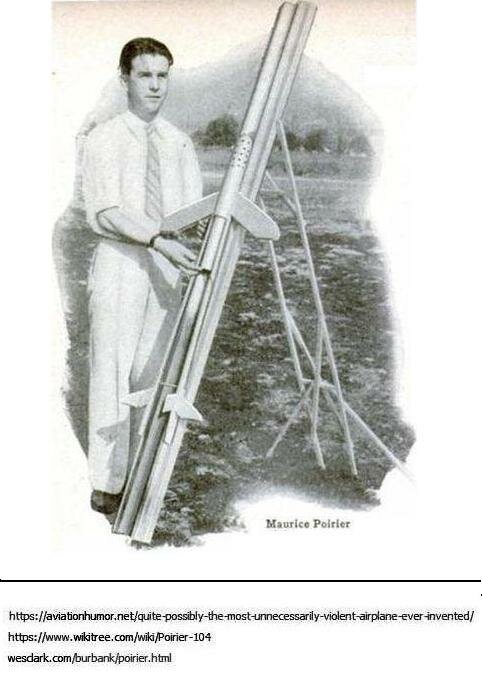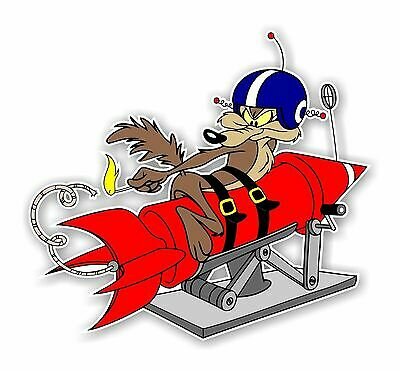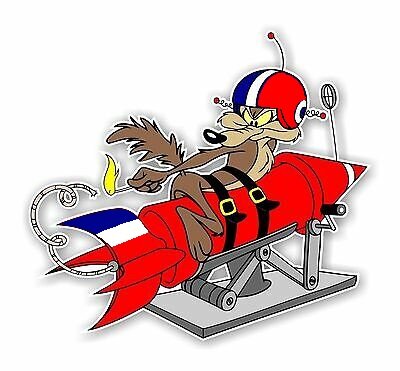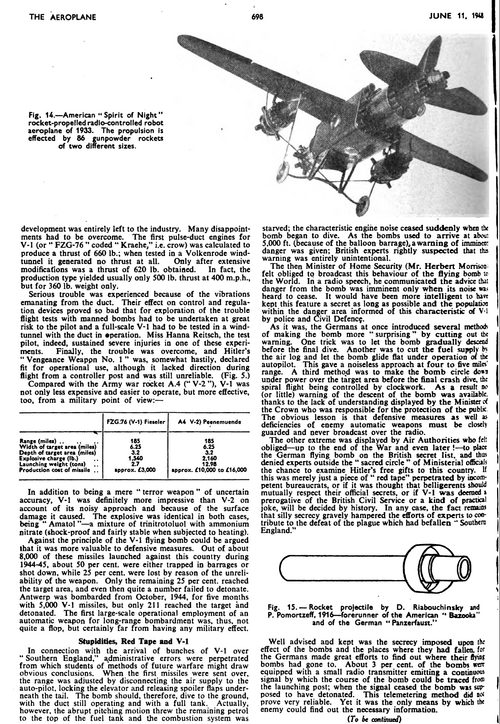You are using an out of date browser. It may not display this or other websites correctly.
You should upgrade or use an alternative browser.
You should upgrade or use an alternative browser.
Rocket Plane Powered by 86 Gun Barrels of 1929
- Thread starter hesham
- Start date
- Joined
- 26 May 2006
- Messages
- 33,480
- Reaction score
- 13,529
Hi,
I think this Project was real one !,am I right ?.

 www.avia-it.com
www.avia-it.com
I think this Project was real one !,am I right ?.

Tunaspoker: Daftar Situs IDN POKER Online | Agen Judi Online Poker
Tunaspoker adalah Daftar Situs IDN POKER Online terpercaya dan sebagai Agen Judi Online resmi IDN POKER tahun 2022 dengan menggunakan uang asli.
Attachments
klem
I really should change my personal text
- Joined
- 7 March 2015
- Messages
- 701
- Reaction score
- 1,515
The Poirier Radio-guided rocket plane "Spirit of night" 1933, is a standard type aircraft that has been transformed into a rocket-powered machine equipped with a cannon. This radio guided aircraft is the invention of Maurice Poirier from Burbank, California.French born Maurice Poirier , then naturalized American, watchmaker and inventor passionate about rockets. Nicknamed "the man with Ten Ideas Per Minute !" His plane used ordinary gasoline engines in addition to rockets.There are 86 ordinary powder rocket tubes of two different sizes attached to the fuselage of the plane, providing its propulsion and the concussion resulting from the explosions in the tubes should give the plane a speed of 400 miles per hour.

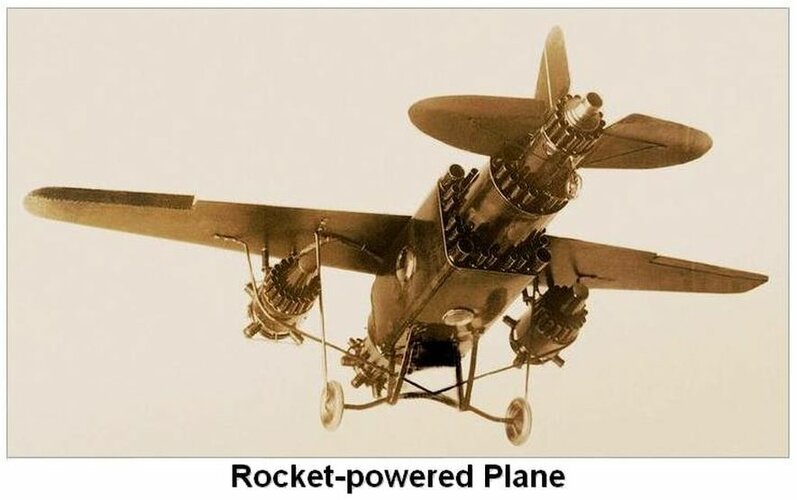
Attachments
Last edited:
Dilandu
I'm dissatisfied, which means, I exist.
Did he actually test it?His plane used ordinary gasoline engines in addition to rockets.There are 86 ordinary powder rocket tubes of two different sizes attached to the fuselage of the plane, providing its propulsion and the concussion resulting from the explosions in the tubes should give the plane a speed of 400 miles per hour.
Also, what kind of radio control did he used?
klem
I really should change my personal text
- Joined
- 7 March 2015
- Messages
- 701
- Reaction score
- 1,515
No, I don't think this project has been tested. I haven't found any specific confirmation, maybe there is something in the A.R. Weyl-Guided Missiles book, but it seems that Poirier was considering two versions of this aircraft: one radio controlled as quoted by Weyl and another with 4 passengers according to an article in Popular Aviation in August 1930. I think it's crazy to be encircled by rockets filled with gunpowder in a plane full of gasoline.Did he actually test it?His plane used ordinary gasoline engines in addition to rockets.There are 86 ordinary powder rocket tubes of two different sizes attached to the fuselage of the plane, providing its propulsion and the concussion resulting from the explosions in the tubes should give the plane a speed of 400 miles per hour.
Also, what kind of radio control did he used?
klem
I really should change my personal text
- Joined
- 7 March 2015
- Messages
- 701
- Reaction score
- 1,515
I knew that Poirier was French , and was passionate about rockets.Vile Le Coyote, french cousin of Wile E. Coyote...
Last edited:
No, I don't think this project has been tested. I haven't found any specific confirmation, maybe there is something in the A.R. Weyl-Guided Missiles book, but it seems that Poirier was considering two versions of this aircraft: one radio controlled as quoted by Weyl and another with 4 passengers according to an article in Popular Aviation in August 1930. I think it's crazy to be encircled by rockets filled with gunpowder in a plane full of gasoline.Did he actually test it?His plane used ordinary gasoline engines in addition to rockets.There are 86 ordinary powder rocket tubes of two different sizes attached to the fuselage of the plane, providing its propulsion and the concussion resulting from the explosions in the tubes should give the plane a speed of 400 miles per hour.
Also, what kind of radio control did he used?
Hence my (lame) joke about Wile E. Coyote. It really looks like the kind of contraption the poor animal would invent to catch the roadrunner...
More seriously, as you said, no way it would end well.
They say Poirier was from Burbank, California ? (the land of Lockheed !)
I wish to know more about the man, he could be of extreme interest to "France fights on". I already wrote the adventures of Jean Jacques Barré and Leduc, in the Sahara desert not too far from Hammaguir...
klem
I really should change my personal text
- Joined
- 7 March 2015
- Messages
- 701
- Reaction score
- 1,515
Interesting, the space adventure of France, especially the CIEES, where the greatest progress in the matter was made and I believe that Eugen Saenger was also there, it was really the take-off and the launching of the will not to remain behind. Let's get back to Poirier, I've looked through the few pages that are on the net and there isn't much, a few sites with newspaper cuttings, no biography as such, I don't know what the universities are doing, I haven't looked into it, but I'm receptive, just let me know.ThanksNo, I don't think this project has been tested. I haven't found any specific confirmation, maybe there is something in the A.R. Weyl-Guided Missiles book, but it seems that Poirier was considering two versions of this aircraft: one radio controlled as quoted by Weyl and another with 4 passengers according to an article in Popular Aviation in August 1930. I think it's crazy to be encircled by rockets filled with gunpowder in a plane full of gasoline.Did he actually test it?His plane used ordinary gasoline engines in addition to rockets.There are 86 ordinary powder rocket tubes of two different sizes attached to the fuselage of the plane, providing its propulsion and the concussion resulting from the explosions in the tubes should give the plane a speed of 400 miles per hour.
Also, what kind of radio control did he used?
Hence my (lame) joke about Wile E. Coyote. It really looks like the kind of contraption the poor animal would invent to catch the roadrunner...
More seriously, as you said, no way it would end well.
They say Poirier was from Burbank, California ? (the land of Lockheed !)
I wish to know more about the man, he could be of extreme interest to "France fights on". I already wrote the adventures of Jean Jacques Barré and Leduc, in the Sahara desert not too far from Hammaguir...
klem
I really should change my personal text
- Joined
- 7 March 2015
- Messages
- 701
- Reaction score
- 1,515
Nik
ACCESS: Top Secret
- Joined
- 15 July 2009
- Messages
- 1,241
- Reaction score
- 1,002
Wow, Poirier's notion makes the mid-30s BIS Moon Mission design with its zillion solid-fuel rockets seem remarkably benign...
( IIRC, after they saw newspaper pics of first V2's liquid-fuelled wreckage, took them but a long weekend to re-design thus... )
( IIRC, after they saw newspaper pics of first V2's liquid-fuelled wreckage, took them but a long weekend to re-design thus... )
best analogyView attachment 669457Vile Le Coyote, french cousin of Wile E. Coyote...
He got the colours right - bleu, blanc, rouge ! Vive la France ! I'm really tempted to tweak that picture to add the French flag colors either on the rocket or on the helmet...
DONE !
Attachments
Last edited:
klem
I really should change my personal text
- Joined
- 7 March 2015
- Messages
- 701
- Reaction score
- 1,515
As long as he was an American of French origin, the three colors look good for both France and the United States.best analogyView attachment 669457Vile Le Coyote, french cousin of Wile E. Coyote...
He got the colours right - bleu, blanc, rouge ! Vive la France ! I'm really tempted to tweak that picture to add the French flag colors either on the rocket or on the helmet...
DONE !
Along those lines
. Randall seems to think this would work:

 en.m.wikipedia.org
en.m.wikipedia.org
. Randall seems to think this would work:

Gryazev-Shipunov GSh-6-30 - Wikipedia
Nik
ACCESS: Top Secret
- Joined
- 15 July 2009
- Messages
- 1,241
- Reaction score
- 1,002
Shades of 'King David's Spaceship' by Pournelle

 en.wikipedia.org
en.wikipedia.org
Think of it as a mini, non-nuclear 'Orion'...

King David's Spaceship - Wikipedia
Think of it as a mini, non-nuclear 'Orion'...
The picture is in all certainties that of a scale model, probably in a studio.
There is no way that amount of thick steel would have been carried aloft by such a plane... Nor that such structure could have absorbed the recoil (even without firing a shell).
There is no way that amount of thick steel would have been carried aloft by such a plane... Nor that such structure could have absorbed the recoil (even without firing a shell).
Given how Poirier looked in the 1920s and 30s, he might have been born much later than 1866.The Poirier Radio-guided rocket plane "Spirit of night" 1933, is a standard type aircraft that has been transformed into a rocket-powered machine equipped with a cannon. This radio guided aircraft is the invention of Maurice Poirier from Burbank, California.French born Maurice Alfrède Paul Poirier 18 Sep 1866 in Saint-Georges-d'Oléron,île d'Oléron,Charente-Maritime., then naturalized American, watchmaker and inventor passionate about rockets. Nicknamed "the man with Ten Ideas Per Minute !" His plane used ordinary gasoline engines in addition to rockets.There are 86 ordinary powder rocket tubes of two different sizes attached to the fuselage of the plane, providing its propulsion and the concussion resulting from the explosions in the tubes should give the plane a speed of 400 miles per hour.View attachment 669407
Cover illustration of 7 May 1939 issue of Jeunesse Magazine
Similar threads
-
Dirigible-Airplane of 1920s & 1930s
- Started by hesham
- Replies: 16
-
Hydraulically-driven chain gun?
- Started by GWrecks
- Replies: 0
-
-
-

